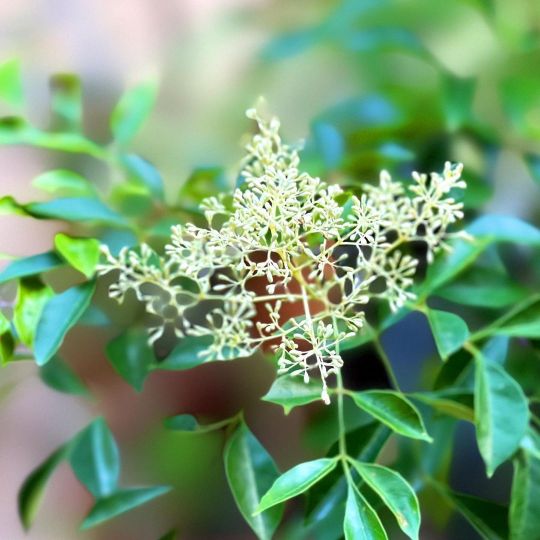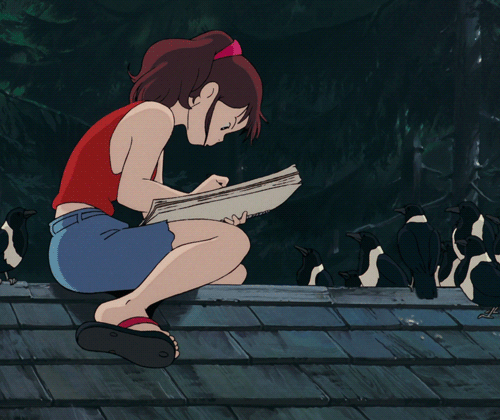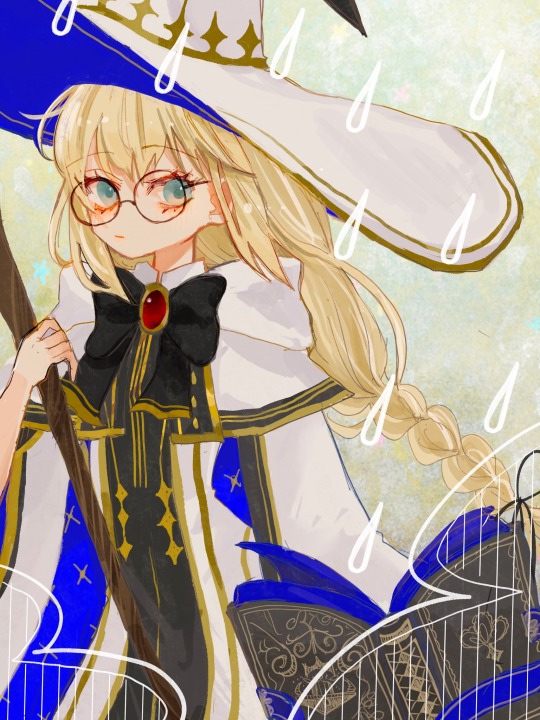#トネリコ
Text

【FGO】雨の魔女【トネリコ】 by オノ・タコ
※Illustration shared with permission from the artist. If you like this artwork please support the artist by visiting the source.
563 notes
·
View notes
Photo

ガルバリウムと塗壁を使った外観事例です。 全体とフレームをガルバリウムの濃灰、 奥に入った部分を白塗りに。 柔らかく反射した光を採り込みたい願望です。 自邸の管理怠り、雑草も植栽も伸び放題(汗 好みはあると思いますが、個人的には、 自然に馴染んだ草木は好みです。 目隠しの植栽でいい具合に隠れていますが、 縦に抜いた大きな窓が外と繋がるイメージでつくりました。 気になる点や質問があれば、気軽にコメント、 DMお願いします! 他にも様々なお家をHPで紹介しているので @kazuya_ikezoi からとんで見てみてください。 よかったらフォローもお願いします。 #家づくりのアイデア #平屋 #家づくり #マイホーム #平屋の外観 #外観 #平屋の家 #外壁選び #ベルアート #ガルバリウム #ガルバリウム外壁 #塗壁の家 #シンボルツリー #シマトネリコ #トネリコ #外構 #庭 #エクステリア #コンクリート壁 #打ちっぱなし #設計士とつくる家 #設計事務所とつくる家 #香川 #愛媛 #大阪 #徳島 #コラボハウス https://www.instagram.com/p/CgzAB1vrepu/?igshid=NGJjMDIxMWI=
#家づくりのアイデア#平屋#家づくり#マイホーム#平屋の外観#外観#平屋の家#外壁選び#ベルアート#ガルバリウム#ガルバリウム外壁#塗壁の家#シンボルツリー#シマトネリコ#トネリコ#外構#庭#エクステリア#コンクリート壁#打ちっぱなし#設計士とつくる家#設計事務所とつくる家#香川#愛媛#大阪#徳島#コラボハウス
1 note
·
View note
Photo

てんとう虫に攻撃を受けているテラスのトネリコに花が咲きました #ashtree #トネリコ #kichijoji #吉祥寺 (at Kichijoji,tokyo) https://www.instagram.com/p/CfWEniyvE0P/?igshid=NGJjMDIxMWI=
0 notes
Text
[FGO]マシュのパワーアップは南米7章ナウイ・ミクトランか。トネリコ「その次の異聞帯で…英霊ギャラハッドは再び、貴女にすべてを託すでしょう。」
814: マスター 2022/06/27(月) 15:34:29 やはり妖精國の時のスペシャルマシュは異常に強かったんだなってトラオムやっていて思いました815: マスター 2022/06/27(月) 15:37:13 マシュは本編進まないと解放されんやろ7章か終章かでマシュに何か起こるんじゃね818: マスター 2022/06/27(月) 15:46:15 そもそもマシュの宝具そろそろバージョンアップしようぜ?まだ覚悟完了してないのが駄目なんだっけ?827: マスター 2022/06/27(月) 17:19:23 >>818無意識に人生における「戦うこと」を忌避しているらしい819: マスター 2022/06/27(月) 15:57:00 マシュの宝具どうなるかなロード・キャメロットと同じ効果じゃつまらんし差別化期待してるぞ828: マスター 2022/06/27(月)…

View On WordPress
0 notes
Text
旅人(トネリコ)×林の騎士
旅の最中、男は深い森の中に店主の居ない酒場を見付ける。
店のあちこちは傷み植物が根を張っていたが、真新しい綺麗な張り紙で「旅の疲れを癒やして下さい」と書かれていた。
旅人は、森の獣にでも馬鹿されているのだろうか。なんて思いながら酒場に入る。
店主は居ないが、カウンターにはメニュー表と紙とペンが置かれていた。
試しに、果実酒の名前を記入しカウンターへ置くと、するすると木の枝が伸びてきてその紙を持っていった。そして、暫くするとひんやりとした冷気を纏った果実酒が、カウンターの上へ差し出された。
旅人は驚きながらもその果実酒を口に運んだ。長い旅の中で、酒を口にしたのは久しぶりだった。甘く、鼻を突き抜ける様な爽やかさに、過去に旅の最中に立ち寄った酒場を思い出した。
ふと、この酒場は木の枝や根が張り巡らされているが、花は咲いていない事に気が付いた。
あの酒場では、木に花を咲かせようと集まった名の知らぬ者達で演奏会なんて行ったか。と、ふと思い出して懐かしむ。
笛はまだあった筈だ、と荷物の中を漁り取り出せば、久しぶりに握るそれはひんやりとしていた。
酒で潤った喉で奏でたそれは、久しぶりだというのに美しく音を奏でた。
一頻り吹き満足し口を笛から離した所で、乾いた音が聞こえてきた。拍手だった。
此処の店主か?そう空虚に声をかければ、暫くした後に、えぇ。美しい演奏でした。と声が帰ってきた。
甘い低さを持つその声に驚きながらも、一人旅で会話に飢えていた旅人は積極的に話し掛けていた。
昔行った土地で、木に花を咲かす為に演奏会を行った事や、故郷の木の事を話した。店主は、姿を現しはしなかったが、優しく相槌を打ってくれた。
店主の話も聞きたかったが、話題を振ってははぐらかされた。
「どうしてかな。此処は酷く安心する。故郷の木に似ているのかもしれない。」
酒の回った頭で、故郷を思い出した。
いつだって、思い出すのは緑に溢れ木々も天に向かって繁々も枝を広げていた時代の事ばかりだ。
旅人には、一等お気に入りの木があった。
「今思えば、あの木に恋していたのかもしれない。」
そう呟くと、店主が息を呑む様な音がした。
嬉しい時も、悲しい時も、あの木の傍に行ったんだ。変な話だが、俺の話をいつも聞いてくれているみたいだった。あの木が燃やされてから、俺は心の安らぐ場所を失った。村を出ず、あの木の傍に居てやれば良かった。ずっと、その後悔から逃げる様に旅を続けていたんだ。
懺悔の様に、旅人は吐き出す。
此処を離れたくないな。
そう呟けば、木の枝が自分の手の甲を撫でる様に伸びてきた。
その先を探す様に顔をあげると、いつの間にか目の前に、甲冑を身に着けた騎士の姿があった。
「此処で休めば良い。貴方は、充分旅をしてきたではありませんか。」
騎士は優しい声で語りかけ、旅人の頬へと触れた。
年老いて痩せ細り関節の目立つ様になった指を、皺の多くなった皮膚を、彼の痕跡が辿る様に撫でていく。
今の今まで旅が出来ていた事が不思議なぐらい、旅人の身体は朽ちる寸前だった。
「此処に居ても良いのか。」
「えぇ、居て下さい。ずっと貴方を待っていた。」
貴方は私の事なんてすっかり忘れているかと思った。
優しいその声と腕に身を委ねながら、旅人は眠りに付いた。その朽ちた酒場には懐かしい故郷の名の刻まれていた事を旅人は気付いていたのかは最期まで分からなかった。
数年後、林の騎士にせっせと林檎を運ぶ獣の姿が見られる様になると良い。
0 notes
Text

出勤途中の家のブロック塀の前で咲いていた、
「マンナトネリコ」という名前の花。
一般名:マンナシオジ、マンナノキ。
欧文名:Fraxinus or us
1 note
·
View note
Text

★ 【TESIN】 「 トネリコ 」 ☆
✔ republished w/permission
⊳ ⊳ follow me on twitter
288 notes
·
View notes
Text
The Fae of the British Lostbelt
This is gonna be a long one, so strap in.
The fae and other creatures of the British Lostbelt take heavy inspiration from real-life legends; almost every major character is named after a type of fairy or mystical creature from British folklore. Many of these names are not English; I've added a pronunciation guide for these in brackets after the word. In this post, I'll go over the beings and concepts these characters are named for and compare the legend to the original. This won't include Morgan or Oberon; those figures are complex enough to deserve posts of their own.
Aesc [ASH]
Aesc is more accurately spelled Æsc. It's an Old English word for the ash tree, and also doubles as the word for the rune for the letter Æ. This is pretty much a direct translation into Old English of Aesc's Japanese name, Tonelico (トネリコ), a word meaning "ash tree".
Albion
Albion is a poetic name for the island of Britain, from Greek Albiōn (Ἀλβίων), the name used by classical geographers to describe an island believed to be Britain. The name probably means "white place", which is how it's connected to the Albion of Fate. The Albion of Fate is the White Dragon, a symbol of the Saxons from a Welsh legend. In the most well-known version of the legend, the King of the Britons at the time, Vortigern, was trying to build a castle on top of a hill in Wales to defend against the invading Saxons, but everything he tried to build collapsed. He was told by his court wizard to find a young boy with no father and sacrifice him atop the hill to alleviate the curse. He sent his soldiers out and found a boy being teased for being fatherless, but when he brought the boy to the hill, the boy, a young Merlin, told him that his court wizard was a fool and that the real reason for the collapsing castle was two dragons inside the hill, one red and one white, locked in battle. The red dragon represented the Britons, and the white dragon represented the Saxons. Merlin told Vortigern that nothing could be built on the hill until the red dragon killed the white one. A red dragon is the symbol of Wales to this day, and a white dragon is occasionally used in Welsh poetry to negatively represent England. This white dragon is Albion in Type/Moon lore.
Baobhan Sìth [bah-VAHN shee]
A baobhan sìth is a female fairy in Scottish folklore. The name literally means "fairy woman" in Scottish Gaelic. They appear as a beautiful woman and seduce hunters traveling late at night so that they can kill and eat them, or drink their blood depending on the story. They're unrelated to banshees except in terms of etymology (Banshee is from Old Irish "ben síde", meaning the same thing as baobhan sìth). They're often depicted with deer hooves instead of feet, which is probably what inspired Baobhan Sìth's love of shoes.
Barghest
In the folklore of Northern England, a barghest is a monstrous black dog with fiery eyes teeth and claws the size of a bear's. The name probably derives from "burh-ghest", or "town-ghost". It was often said to appear as an omen of death, and was followed by the sound of rattling chains. The rattling chains probably inspired Barghest's chains. Her fire powers are also obviously based on the fiery eyes of the barghest. Otherwise, she's not very connected to the folkloric barghest, which is never associated with hunger or eating humans.
Boggart
In English folklore, a boggart is either a malevolent household spirit or a malevolent creature inhabiting a field, a marsh, a hill, a forest clearing, etc. The term is related to the terms bugbear and bogeyman, all originally from Middle English bugge, or possibly Welsh bwg [BOOG] or bwca [BOO-cuh], all words for a goblin-like monster. It usually resembled a satyr. It's not really ever depicted with lion features, so it's anyone's guess why Boggart is a lion-man.
Cernunnos [ker-NOON-ahs]
Cernunnos, probably meaning "horned one", was an important pre-Roman Celtic god. His existence is only attested by fragmentary inscriptions and the repeated motif in Celtic religious art of a "horned god", a humanoid figure with deer antlers seated cross-legged. This fragmentary evidence is often led to assume that Cernunnos was a god of nature, wilderness, animals and fertility. There exists no evidence that Cernunnos was a chief deity of any kind, since we have barely any evidence he existed at all in the first place. Cernunnos might not even be his name; it's just the only name we have. Needless to say, the only thing the Cernunnos in the British Lostbelt has in common with the real figure is his large antlers.
Cnoc na Riabh [kuh-nock-nuh-REE-uh]
Cnoc na Riabh, Knocknarea in English, is a hill in Sligo in Ireland. The name means "hill of the stripes", referring to its striking limestone cliffs. It's said to be the location where Medb's tomb lies, so it's connected to Cnoc na Riabh through Fate's conflation of Medb with Queen Mab, a fairy mentioned in Romeo and Juliet; this etymology of Mab as derived from Medb was formerly accepted, but has lost favour with the advent of modern Celtic studies due to the lack of any concrete connection between the two figures.
Grímr (don't know how to say this one, apologies; Germanic myth is not my strong suit)
Odin (Wōden in Old English) was a god worshiped in many places, basically anywhere the Germanic peoples went, including the Anglo-Saxons that became today's English people. As such a widely worshiped god, he had a very large number of names, titles and epithets. Grímr is one such name, literally meaning "mask", referring to Odin's frequent usage of disguises in myths, which is fitting for how Cú disguised himself as a faerie in the British Lostbelt and hid that he possessed Odin's Divinity from Chaldea.
Habetrot
Habetrot is a figure from Northern England and the Scottish Lowlands, depicted as a disfigured elderly woman who sewed for a living and lived underground with other disfigured spinsters. She often spun wedding gowns for brides. Cloth spun by her was said to have curative and apotropaic properties. All the Habetrot of the British Lostbelt has in common with this figure is the association with brides and with spinning cloth. "Totorot" is not a real figure; the name is just an obvious tweak of Habetrot.
Mélusine
Mélusine is a figure that appears in folklore all across Europe. The name probably derives from Latin "melus", meaning "pleasant". She's a female spirit of water with the body of a beautiful woman from the waist up, and the body of a serpent or a fish from the waist down. In most stories, she falls in love with a human man and bears his children, using magic to conceal her inhuman nature. However, she tells her lover he must never look upon her when she is bathing or giving birth. Of course, he invariably does so, and when he does, he discovers her serpentine lower body, and she leaves, taking their children with her. Since Mélusine is just the name Aurora gave her, the Mélusine of the British Lostbelt has very little to do with this figure, but an analogy can be drawn between the Mélusine of folklore hiding her true form as a half-serpent to maintain her relationship with her lover, and Fate's Mélusine suppressing her true form as both a dragon and an undifferentiated mass of cells to ensure Aurora continues to love her.
Muryan [MUR-yan]
A muryan is a rather obscure Cornish fairy. The word is Cornish for "ant". Muryans are diminutive figures with shapechanging abilities, cursed to grow smaller every time they use those abilities until they eventually vanish altogether. Muryan, of course, is connected to muryans through her ability to shrink others.
Spriggan [SPRID-jan]
A spriggan is a type of creature in Cornish folklore. The word is derived from the Cornish word "spyryjyon" [same pronunciation], the plural of "spyrys", meaning "fairy". They're usually grotesque old men with incredible strength and incredibly malicious dispositions, and are often depicted guarding buried treasure. Spriggan is not himself a faerie, and the name is stolen from a faerie he killed, but it's still appropriate due to the greed and selfishness spriggans are usually depicted with.
Woodwose
Woodwose is a Middle English term for the wild man, a motif in European art comparable to the satyr or faun. The etymology is unclear. It has little to do with wolves or animals, despite its association with wildness, but there is at least a thematic connection with Woodwose's character, since the archetype of the wild man depicts a figure who cannot be civilised or well-mannered no matter how hard he tries, much like how Woodwose barely restrains his temper by being a vegetarian and dressing in a fine suit. Woodwose's predecessor, Wryneck, is named for a type of woodpecker with the ability to rotate its neck almost 180°.
#incoherent rambling#fate grand order#fgo#lostbelt 6#avalon le fae#boggart fate#woodwose fate#habetrot#spriggan fate#muryan#melusine#baobhan sith#cernunnos#barghest#cnoc na riabh#fateposting#if i missed anyone in this post OR in the tags i will jump off a cliff#now it is bedtime#will probably give morgan and oberon their own posts in a few days#school. you know.
308 notes
·
View notes
Photo

[Image above: "Gaia, Mother Earth," by Geraldine Arata]
Legends and myths about trees
Legendary tree deities (9)
Meliae - one of four types of dryads (Ref)
The dryads of the ash tree were called the Meliae. The Meliae sisters tended the infant Zeus in Rhea's Cretan cave. They were the Oread-nymphs of mountain ash-tree, were born from the drops of blood that fell on Gaia (the Earth) when Cronus castrated Uranus (the Sky). Oreads are mountain and cave nymphs in Greek mythology. Oreads differ from each other according to their dwelling.
In The Work and the Day by the ancient Greek epic poet Hesiod, the ash trees, perhaps meaning the Melian nymphs, are said to have been the progenitors of the generation of men belonging to Hesiod's Bronze Age.
They were the wives of the silver race of Man and mothers of the Bronze, the third generation of mankind. They nursed their sons on the honey-sap (Greek meli) of the ash, and armed them with spears crafted from the wood of their trees (Greek melia). The Bronze were an overly warlike race who incurred the wrath of Zeus and were destroyed in the floods of the Great Deluge.

木にまつわる伝説・神話
伝説の樹木の神々 (9)
メリアエ 〜 ギリシャ神話の中の木の精霊たち、4種類のドリュアデス(参照)のうちの一種
トネリコのドライアドはメリアエと呼ばれた。メリアエの姉妹たちは、レアーのクレタ島の洞窟で、幼いゼウスの世話をした。この姉妹たちは、クロノスがウラヌス(天王星)を去勢したときにガイア (地球)に落ちた血の滴から生まれた、トネリコの木のオレード・ニンフ (妖精)である。オレードとは、ギリシア神話に登場する山と洞窟の妖精のこと。オレードたちは、その宿り先によって、それぞれ特徴が異なる。
古代ギリシアの叙事詩人、ヘーシオドスによる『仕事と日』では、トネリコは、おそらくメリアエ族のニンフを意味し、ヘーシオドスの青銅器時代に属する世代の人間の祖先であったと言われている。
彼らは人類の白銀時代の種族の妻であり、人類の第三世代である青銅時代の種族の母であった。彼らは息子たちをトネリコの木の蜜で育て、トネリコの木から作られた槍で武装させた。青銅時代の種族は戦争��きが高じてゼウスの怒りを買い、大洪水で滅ぼされた種族である。
#trees#tree myth#tree legend#mythology#legend#meliae#tree nymph#gaia#mother earth#dryads#greek myhtology#philosophy#nature#art
148 notes
·
View notes
Text
ちょっとまった、これ、苦しいすぎない?
先には人は言ったトゲの意味は個人的な見解ですが、「私の心に触れるな」って事かと思ってますけれど反面マシュと出会った時のトネリコにはトゲが無い=拒絶していない、

ウオオおおお!!!マシュモルガン最高うう!!モルガンと仲間たちは BIG LOVE!!!!!😭💖💖
61 notes
·
View notes
Note
My bad if it's been mentioned before but do you know of the Japanese Shoegaze band WALRUS? I stumbled on them one night like 6 months ago and I feel like I heard the song Toneriko (トネリコ) from this album (https://youtu.be/BNPddd4rkfQ) somewhere 15 years ago, hard to describe the emotion of it but I hope you enjoy the album.
yeah i love that album!!! :D
20 notes
·
View notes
Text
模様替え-2
龍のヒゲの移設
前回からの続きです。石組みのラインに沿って植えてあったヤツらをいったん抜いて、土をほぐしつつ入り込んだ余計なものや宿根を取り除いていきます。
ここも前回と同じく、石組みのラインに沿って株を切り分けた龍のヒゲを植え付けていきます。下から入り込んだ芝と、クローバーがすごかったですね💦
さらに、妻のアイディアでこの付近に防草シートを敷いてみて芝が入らないようにする! ということでやったみたいです😅 しばらくは様子をみますが、この使い方だと植え付けたものの根っこも張りづらくなります🤔 新しくやってきたベゴニアに影響はなさそうですが… とりあえずやってみましょう💪
新しい仲間はいくつか来てて、色違いのガザニア達をリュウゼツランの後ろ側、トネリコの下へ植え付けてみました。ここは以前に妻と、龍のヒゲを株分けして緑の床にしたいということでチャレンジしました。そんなに早く増えるわけでもなか…

View On WordPress
17 notes
·
View notes
Photo

築3年になる自邸ですが、樹木も雑草も 伸び放題なこの時期になりました。 好みはあると思いますが、個人的には、 自然に馴染んだ草木は好みです。 外装は、ガルバリウムと塗壁の組み合わせ。 目隠しの植栽でいい具合に隠れていますが、 縦に抜いた大きな窓が外と繋がるイメージでつくりました。 気になる点や質問があれば、気軽にコメント、 DMお願いします! 他にも様々なお家をHPで紹介しているので @kazuya_ikezoi からとんで見てみてください。 よかったらフォローもお願いします。 #平屋の外観 #外観 #平屋の家 #外壁選び #ベルアート #ガルバリウム #ガルバリウム外壁 #塗壁の家 #シンボルツリー #シマトネリコ #トネリコ #設計士とつくる家 #設計事務所とつくる家 #香川 #愛媛 #大阪 #徳島 #コラボハウス https://www.instagram.com/p/CeDLlGXr5rj/?igshid=NGJjMDIxMWI=
#平屋の外観#外観#平屋の家#外壁選び#ベルアート#ガルバリウム#ガルバリウム外壁#塗壁の家#シンボルツリー#シマトネリコ#トネリコ#設計士とつくる家#設計事務所とつくる家#香川#愛媛#大阪#徳島#コラボハウス
0 notes
Text
vocab pt. 8 from 魔女の宅急便 (kiki’s delivery service)

nouns:
唸り声(うなりごえ) = groan; roar, growl
悲鳴(ひめい) = shriek, scream
一変(いっぺん) = complete change, about-face
小脇(こわき) = under one’s arm
沖(おき) = open sea
トネリコ = (japanese) ash tree
冷や汗(ひやあせ) = cold sweat
風車(ふうしゃ) = windmill, wind turbine
風車(かざぐるま) = pinwheel
verbs:
思い切る(おもいきる) = to make up one’s mind, make a momentous decision
つまずく = to trip (over), stumble; to suffer a setback
引き受ける(ひきうける) = to take on, undertake; to take over, inherit
adjectives:
一人前(いちにんまえ)の = adult, grown-up; fully fledged
しなやかな = supple, elastic; graceful, elegant
adverbs/onomatopoeiae:
ゾッと = shuddering, trembling; being horrified
思い切って(おもいきって) = resolutely, decisively, boldly
思い切り(おもいきり) = to one’s heart’s content; to the best of one’s ability
ひょろっと = thin and tall
expressions:
(Vた/Nの)あげく = after a long process (of V/N)
目(め)をつぶる = to shut one’s eyes; to turn a blind eye to
目(め)が回る(まわる) = to be dizzy, feel faint
汗(あせ)をかく = to sweat
12 notes
·
View notes
